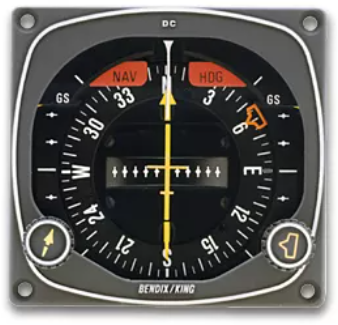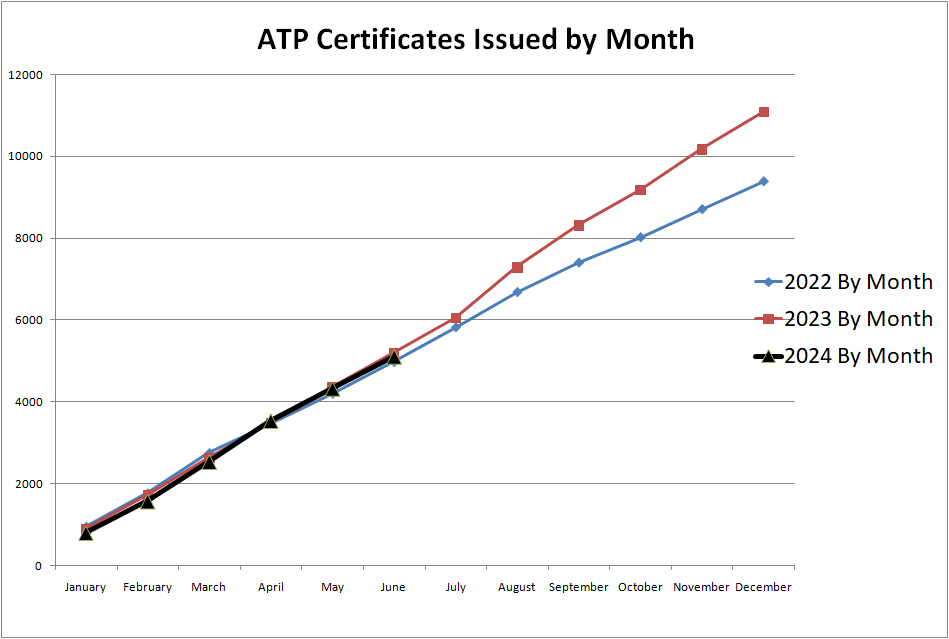Many light general aviation aircraft historically have been equipped with a traditional heading indicator-only instrument. As we modernize aircraft and as pilots fly bigger and better-equipped aircraft, they encounter aircraft panels equipped with HSI instruments of depictions on glass panels.
While both are used to determine the aircraft’s heading, they differ markedly in terms of design, functionality, and the extent of information they provide.
 Traditional Heading Indicator
Traditional Heading Indicator
The traditional heading indicator, also commonly referred to as a directional gyro (DG), is a mechanical instrument that provides the pilot with the aircraft’s heading relative to magnetic north. It operates on the principles of a gyroscope, maintaining its orientation due to the rigidity in space.
The heading indicator uses a gyroscope that maintains its position relative to the horizon. This stability allows it to provide a consistent heading indication even when the aircraft maneuvers. One of the main limitations of the traditional heading indicator is its need for periodic manual calibration. Due to gyroscopic precession and mechanical drift, pilots must frequently align the heading indicator with the magnetic compass to ensure accuracy.
The traditional heading indicator is relatively simple in its design and operation. It typically displays the aircraft’s heading on a rotating compass card, providing a straightforward reading for the pilot. The heading indicator is primarily a standalone instrument, offering limited integration with other navigational systems. It does not provide additional situational awareness beyond heading information.
 Horizontal Situation Indicator (HSI)
Horizontal Situation Indicator (HSI)
The Horizontal Situation Indicator is a more advanced navigational instrument that combines the functions of a heading indicator with a course deviation indicator (CDI), providing a comprehensive view of the aircraft’s position relative to a selected navigation course. The HSI integrates several navigational inputs, offering enhanced situational awareness.
The HSI combines heading information with course guidance. It displays the aircraft’s heading, the selected navigation course, and the course deviation all on one instrument. This integration simplifies navigation by consolidating essential information in a single display. By combining heading and course information, the HSI reduces the pilot’s workload. Pilots no longer need to cross-check multiple instruments to determine their heading and course deviation, allowing them to focus more on flying and decision-making.
Unlike the traditional heading indicator, the HSI often includes an automatic synchronization feature, reducing the need for manual calibration. This feature ensures that the heading information remains accurate and reliable throughout the flight. The HSI provides a visual representation of the aircraft’s position relative to the desired course, enhancing situational awareness. This is particularly useful during instrument approaches and enroute navigation, where maintaining precise course alignment is critical.
The HSI is typically integrated with various navigation systems, including VOR, ILS, and GPS. This integration allows pilots to navigate using different types of signals and enhances the overall utility of the instrument. Nearly all modern glass panel aircraft depictions are HSI depictions instead of more traditional heading indicator depictions.
Modernization of our instrumentation to the inclusion of HSI depictions (or stand-alone instruments) gives us advantages over “the early days of flying.”
The traditional heading indicator is limited to providing heading information, whereas the HSI offers comprehensive navigational data, including course guidance and deviation.
The HSI simplifies navigation by consolidating information and reducing the pilot’s workload. In contrast, the traditional heading indicator requires frequent calibration and cross-referencing with other instruments. The automatic synchronization feature of the HSI enhances accuracy by minimizing drift and precession errors. The traditional heading indicator, on the other hand, relies on manual calibration to maintain accuracy.
The HSI provides better situational awareness by integrating heading and course information into a single display. This integration is particularly valuable during complex navigational tasks.
The HSI represents a significant technological advancement over the traditional heading indicator. Its ability to integrate with modern navigation systems makes it a preferred choice in contemporary aviation.


 Looking at ATP certification numbers is something that helps us gauge how many pilots we are pushing through the system to go into service in professional, primarily airline, pilot jobs. As we all hear current stories about reductions in hiring, I found it interesting to look at the numbers month-to-month so far this year compared to previous years.
Looking at ATP certification numbers is something that helps us gauge how many pilots we are pushing through the system to go into service in professional, primarily airline, pilot jobs. As we all hear current stories about reductions in hiring, I found it interesting to look at the numbers month-to-month so far this year compared to previous years.
